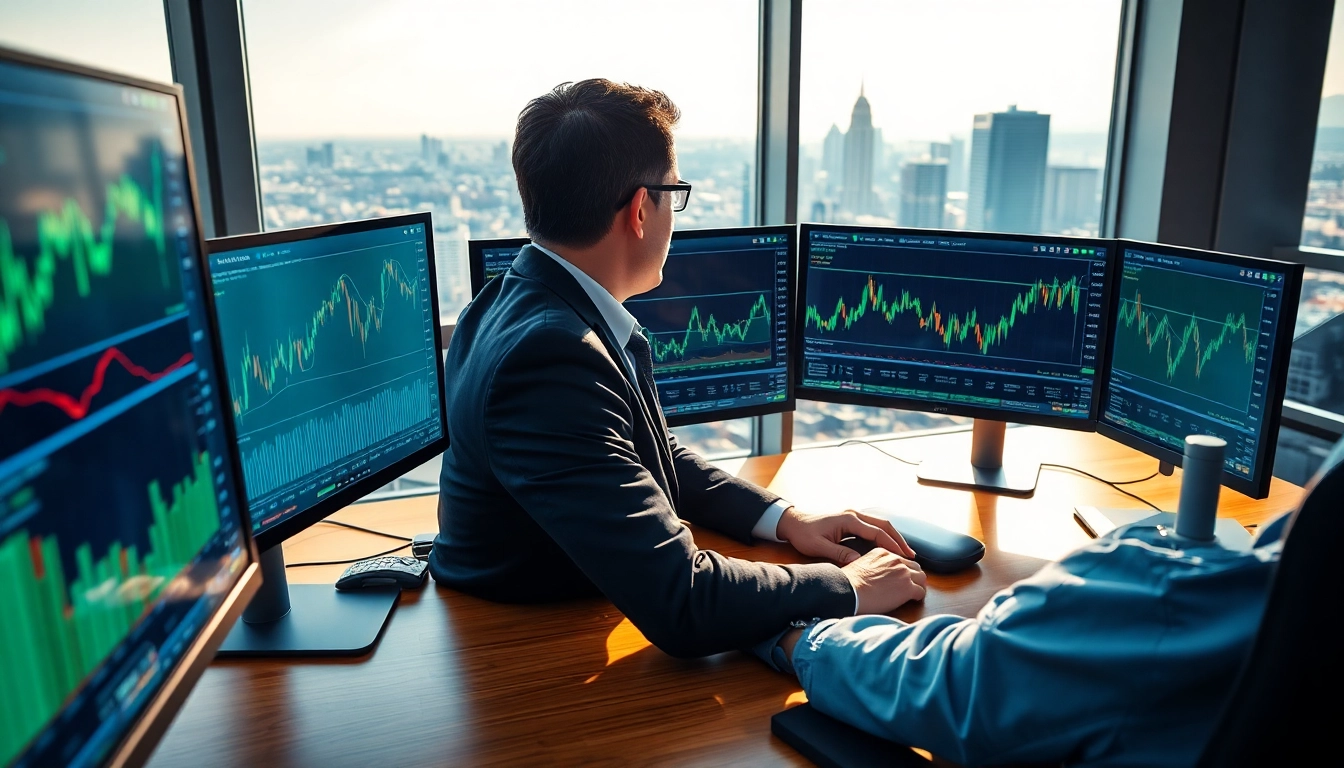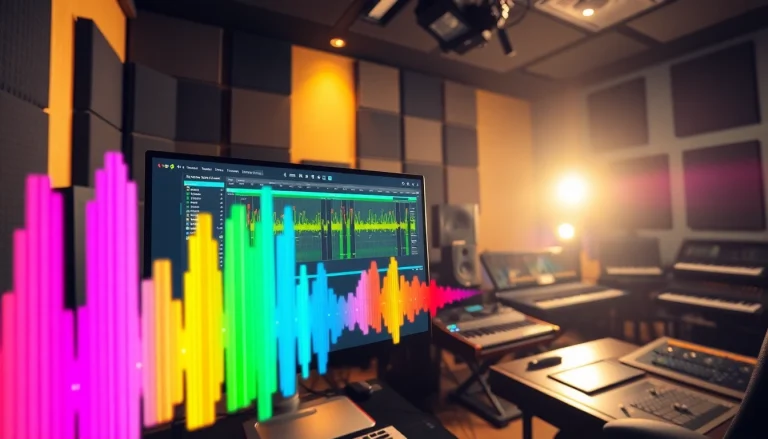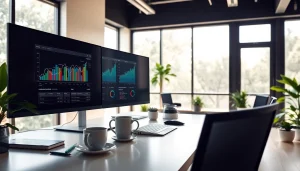Understanding Trade Futures Basics
In the realm of finance, trade futures represent a vital mechanism that facilitates trading on various markets. Futures contracts allow traders to buy or sell an asset at a predetermined future date and price, making them essential tools for hedging, speculating, and managing risk. This article delves into the fundamental concepts of trade futures, unpacking essential terminologies, their significance in the financial markets, and much more.
What are Trade Futures?
Futures contracts are agreements to buy or sell an asset at a specified price on a specified future date. These instruments are typically standardized and traded on an exchange, which allows for greater liquidity and transparency. For example, a trader who believes that the price of oil will rise might buy a futures contract at $70 per barrel for delivery in three months. If the market price rises to $80 by that date, the trader can then sell the contract for a profit.
Key Terminology in Trade Futures
Understanding key terminology is essential for anyone interested in trading futures. Here are some important terms:
- Contract size: Refers to the amount of the underlying asset covered by a single futures contract.
- Expiration date: The date on which the futures contract ceases to exist and is settled.
- Margin: The amount of money that must be deposited to open a position, serving as a security for both parties.
- Leverage: The use of borrowed capital to increase potential returns, which also increases risk.
- Settlement: The process of fulfilling a contract, which can be through physical delivery of the asset or cash settlement.
The Importance of Trade Futures in Financial Markets
Trade futures play a crucial role in financial markets for several reasons. First, they provide a way for businesses to hedge against price fluctuations in commodities and financial instruments, ensuring price stability for their operations. For example, a farmer can lock in the selling price of their crops before harvest, protecting against adverse price changes. Second, futures trading adds liquidity to the markets, allowing for quicker and more efficient transactions, which benefits all participants. Lastly, futures markets often serve as barometers for economic activity, providing insights into investor sentiment and expectations.
Analyzing Market Trends for Trade Futures
To excel in trading futures, understanding market trends is paramount. This section covers how to identify market indicators, utilize technical analysis, and conduct fundamental analysis to make informed trading decisions.
Identifying Market Indicators
Market indicators are signals that provide insights into price movements and market sentiment. Common indicators in futures trading include:
- Price trends: Observing the direction and momentum of price movements can indicate future price movements.
- Volume: Analyzing trading volume can demonstrate the strength behind a price movement; increasing volume typically supports a trend, while decreasing volume may suggest a reversal.
- Open interest: This measures the number of outstanding contracts in the market, which can signal market strength or weakness.
Using Technical Analysis in Trade Futures
Technical analysis involves using historical price data to forecast future price movements. Traders often use chart patterns, indicators, and oscillators to identify potential entry and exit points. Key technical analysis tools include:
- Moving averages: These smooth out price data to identify trends over specific periods.
- Bollinger Bands: These indicate volatility and potential price reversals based on historical price behavior.
- Relative Strength Index (RSI): This oscillator is useful for identifying overbought or oversold conditions in a market.
Fundamental Analysis of Trade Futures
Fundamental analysis examines the underlying factors that can influence the price of the asset. For commodity futures, this may include supply and demand dynamics, geopolitical events, and macroeconomic indicators such as GDP growth or unemployment rates. Understanding these factors can provide valuable insights into potential long-term trends in the futures markets.
Strategies for Trading Futures Successfully
With a solid understanding of the market, the next step is to develop effective trading strategies. Here, we discuss how to create a trading plan, manage risks, and leverage trading tools and resources.
Developing a Trading Plan
A well-structured trading plan is vital for success in trading futures. It should outline your trading goals, risk tolerance, and specific entry and exit strategies. Essential components of a trading plan include:
- Market selection: Identify which futures markets you wish to trade based on your research and interests.
- Timeframe: Determine the duration of your trades, whether you prefer day trading or longer-term positions.
- Criteria for entering and exiting trades: Establish rules for entering trades based on technical or fundamental analysis.
- Review and adjust: Regularly review the performance of your trades and adjust your strategies as necessary.
Risk Management in Trade Futures
Managing risk is crucial in futures trading, given the leveraging of positions and market volatility. Effective risk management strategies include:
- Setting stop-loss orders: These orders automatically close a position at a predetermined loss level, helping to minimize losses.
- Diversifying your portfolio: Avoid concentrating your investments in a single asset or sector to spread risk.
- Determining position sizes: Calculate how much capital to allocate to each trade based on your risk tolerance.
Leveraging Trading Tools and Resources
Successful traders utilize a variety of tools and resources to aid their trading decisions. Examples include trading platforms, analytical software, and educational materials. Many investors also subscribe to financial news services for real-time information that can influence futures prices. Building a toolkit that includes a reliable broker, market analysis tools, and educational resources is essential for any aspiring futures trader.
Common Challenges in Trade Futures
The futures market can present various challenges. Understanding these challenges—and how to overcome them—can improve trading success.
Market Volatility and Its Impact
Market volatility can lead to rapid price changes and increased uncertainty, resulting in potential losses for traders. To cope with volatility, traders should:
- Use technical indicators to identify support and resistance levels.
- Implement dynamic stop-loss strategies that can adapt to changing market conditions.
- Remain disciplined and avoid emotional trading decisions during volatile periods.
Emotional Trading Pitfalls
Emotions can lead to irrational trading decisions, such as overtrading or chasing losses. To combat emotional trading:
- Stick to your trading plan and pre-defined strategies, executing trades based on analysis rather than emotions.
- Incorporate regular self-reflection on trading decisions to learn and recognize emotional triggers.
- Practice mindfulness and stress management techniques to maintain focus and clarity.
Overcoming Information Overload
In today’s data-driven environment, traders can easily become overwhelmed by the sheer volume of information available. To mitigate this information overload, consider:
- Filtering news sources to focus on trusted analysts and reliable channels.
- Setting specific parameters for the type of information you actively pursue, such as focusing solely on market reports relevant to your trades.
- Regularly scheduling time to review and assimilate information, ensuring that you don’t miss critical updates while avoiding constant distractions.
Evaluating Performance and Outcomes
Measuring the effectiveness of your trading strategies is vital for ongoing improvement. In this section, we discuss how to assess success, understand losses and gains, and adjust strategies based on performance metrics.
Measuring Success in Trade Futures
Performance metrics such as return on investment (ROI), win-loss ratio, and average profit/loss per trade can help gauge your trading success. Establishing clear benchmarks allows you to measure your progress over time and identify areas for improvement. For instance, a win-loss ratio of 60% means that you successfully gain from 60 out of every 100 trades, a figure worth monitoring as you refine your trading skills.
Understanding Losses and Gains
Every trader experiences losses. Understanding the nature of risks and losses is crucial for long-term success. Analyze your loss patterns to develop strategies aimed at minimizing them, such as implementing tighter stop-loss levels or taking partial profits on successful trades. Recognizing that losses are a natural part of trading helps to mitigate emotional responses and encourage more rational decision-making.
Adjusting Strategies Based on Performance Metrics
Regularly reviewing performance metrics encourages necessary adjustments to your trading strategies. If your win-loss ratio is below expectations or profits per trade are declining, it may indicate the need for strategy revision. Refine your analysis methods, diversify your portfolio, or even consider different trading styles or markets. Continuous evolution is key to keeping pace with market dynamics and achieving trading goals.








